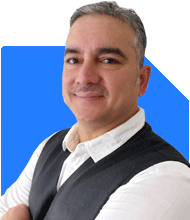Advait Arora | Answer |Ask -Follow
Financial Planner - Answered on May 24, 2023
He holds a masters in IT management from the University Of Wollongong, Australia, and an MBA in marketing from Charles Strut University, NewCastle, Australia.
Advait is a firm believer in the power of compounding to help his clients grow their wealth.... more

Sir, I have 550 @146 shares of Aditya birla Capital and 690 @261 shares of Aditya Birla Fashion . Should I hold or sell? Please advice me.
please note : Investing strategies depends on your risk appetitive, so Please consult your financial advisor and then take further decision.
You may like to see similar questions and answers below
Ajit Mishra | Answer |Ask -Follow
Answered on Apr 01, 2020
Advait Arora | Answer |Ask -Follow
Financial Planner - Answered on May 02, 2023
Advait Arora | Answer |Ask -Follow
Financial Planner - Answered on May 09, 2023
Advait Arora | Answer |Ask -Follow
Financial Planner - Answered on Jun 06, 2023
Samraat Jadhav |2507 Answers |Ask -Follow
Stock Market Expert - Answered on May 24, 2023
Dr Dipankar Dutta |1841 Answers |Ask -Follow
Tech Careers and Skill Development Expert - Answered on Dec 14, 2025
Nayagam P P |10854 Answers |Ask -Follow
Career Counsellor - Answered on Dec 14, 2025
Radheshyam Zanwar |6744 Answers |Ask -Follow
MHT-CET, IIT-JEE, NEET-UG Expert - Answered on Dec 14, 2025
Radheshyam Zanwar |6744 Answers |Ask -Follow
MHT-CET, IIT-JEE, NEET-UG Expert - Answered on Dec 14, 2025
Dr Dipankar Dutta |1841 Answers |Ask -Follow
Tech Careers and Skill Development Expert - Answered on Dec 14, 2025
Dr Dipankar Dutta |1841 Answers |Ask -Follow
Tech Careers and Skill Development Expert - Answered on Dec 13, 2025
Dr Dipankar Dutta |1841 Answers |Ask -Follow
Tech Careers and Skill Development Expert - Answered on Dec 13, 2025
Mayank Chandel |2575 Answers |Ask -Follow
IIT-JEE, NEET-UG, SAT, CLAT, CA, CS Exam Expert - Answered on Dec 13, 2025
Radheshyam Zanwar |6744 Answers |Ask -Follow
MHT-CET, IIT-JEE, NEET-UG Expert - Answered on Dec 13, 2025
Mayank Chandel |2575 Answers |Ask -Follow
IIT-JEE, NEET-UG, SAT, CLAT, CA, CS Exam Expert - Answered on Dec 13, 2025






















